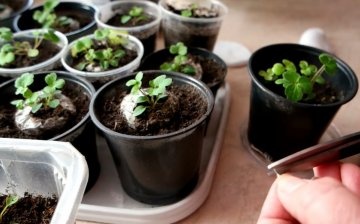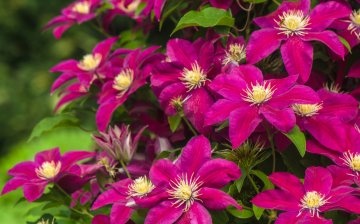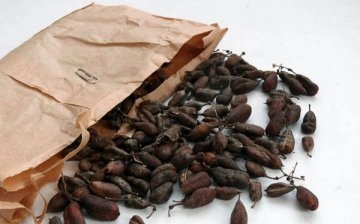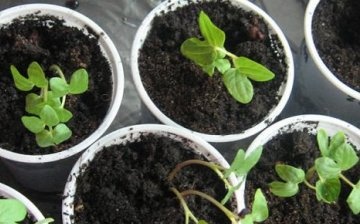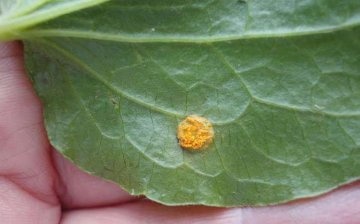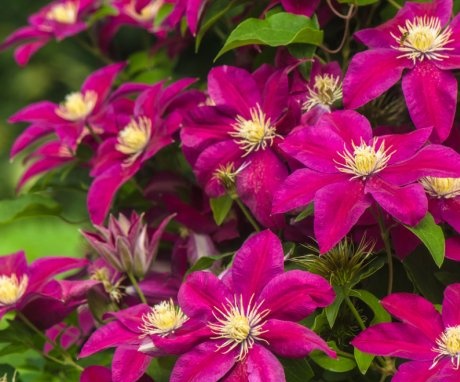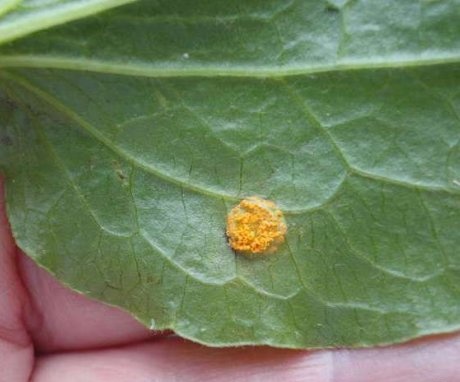Clematis: correct seed propagation
Clematis (Clematis) is a perennial plant of the buttercup family. Most often it is a liana, but there are shrubs and dwarf shrubs. And the very name "clema" means a plant that winds. Clematis, with optimal care, forms many beautiful flowers, large or small. They are all beautiful in their own way.
Content:
- Description of clematis
- Clematis seeds
- Sowing seeds
- Seedling care, transplanting into the ground
- Growing problems
Description of clematis
Clematis grows in the subtropics and mid-latitudes of the northern hemisphere. There are about 3 hundred types of clematis. They are very different from each other. Root system clematis is fibrous or pivotal. Young shoots of herbaceous varieties are round, woody - with noticeable edges. The height of the bush can reach 10 m. Shoots grow from the root or from the buds on the ground part.
Depending on this, the types of clematis are divided into groups with different pruning rules:
- Group A - flowers are formed on last year's shoots.
- Group B - flower buds are formed on all types of branches, last year and young.
- Group C - varieties blooming on young shoots.
Leaves are most often complex with an unpaired number of leaves, but there are also simple ones. Themselves pouring paired, located on the stem opposite each other. The color is green, less often - burgundy or with a bronze tint. The most beautiful flowers in clematis. They can grow singly or in groups.
Instead of petals, they have sepals. Simple flowers can have from 4 to 8, double flowers up to 70 pieces. In the center there is a large number of large hairy stamens. The color range of the petals is wide, from white and yellowish to red, purple and blue in various shades. Each of the flowers can survive on the stem for up to 3 weeks. There are fragrant varieties. All species, except for hybrid ones, form seeds, which are placed in numerous achenes.
Clematis seeds
Not all clematis can be grown from seeds. Basically, the varietal properties of the mother flower are not transferred. More often it is possible to preserve the species properties. The worst situation is with the cultivation of hybrids. Often they do not form seeds at all, or the result is a plant that does not look like the mother. But you can grow a new variety by crossing different varieties using artificial pollination.
They lend themselves well to growing from seeds of small-flowered clematis:
- Manchurian breeds well by seeds, which fall into the ground in autumn, and give amicable shoots in spring.
- Tangut is frost-hardy, therefore it multiplies well by seeds sown before winter.
- The Helio variety is grown in a house or greenhouse because it is afraid of cold weather. Only an adult plant tolerates frost.
The seeds are large, medium-sized and small. The method and time of sowing, stratification, and the timing of germination largely depend on their size:
- Large ones germinate from 1.5 to 8 months (woolly, purple, Jacqueman, Durand).
- The average ones germinate for 1.5 ... 6 months. This is Manchu, Chinese, six-petal, Douglas.
- Small seeds germinate the fastest, from 2 weeks to 4 months (grape-leaved, Tangut).
Seeds ripen 2 ... 2.5 months after flowering. Late varieties ripen in less time than early ones.The collected seeds are sorted, selecting the largest ones.
Sowing seeds
It is advisable to sow seeds in the year of ripening. Their germination capacity will be maximum. You can save them at a temperature of 19-23 ° C for up to 4 years. They are stored not in polyethylene, but in paper bags so that air passes through its walls to the seeds:
- Large seeds are sown shortly after harvest or in December.
- Medium-sized seeds start sowing in January.
- Small ones are buried in the ground in March or April.
Seed germination decreases every year. Before sowing, clematis seeds are prepared by soaking in water for a week. Change it 4 times daily. Blowing air through water works well on seeds. This procedure is called bubbling. It can be carried out with an aquarium compressor. Sparging accelerates germination.
Seeds that will be stored until spring must be stratified for up to 3 weeks at a temperature of 5 ° C. Large seeds sown in early fall are not prepared for sowing. They will be stratified in the ground. When sowing such seeds in December without soaking or stratification seedlings do not appear. Varieties with medium seeds germinate under such conditions, but very poorly. Prepare the soil by mixing equal parts of garden soil, sand and peat. Put it in a bowl with drainage holes and a layer of gravel at the bottom, spray it. Seeds are laid out on top.
You can sow them in cells by placing one seed in them. Sprinkle with a layer of sand, the height of which is equal to 3 diameters of the seed. Condensate. The dishes are covered with glass to create a suitable microclimate. When sowing in open ground, cover with a metal mesh, which will protect from mice.In the room where the dishes with clematis seeds are installed, the temperature is maintained at 25-30 ° C. Water it so that the seeds are not washed out after the topsoil dries up. Insufficient watering delays the emergence of seedlings, overflowing leads to rotting of the soil.
When germinating in a cold room, crops will appear with the onset of warmth, when grown in a warm room - from December to March.
In regions where it is warmer than 17 degrees in winter, clematis seeds are sown in the spring in the beds. Cover with sawdust and sand from above. Such a procedure saves space in the greenhouse; there is no need to dive the seedlings, because few of them emerge. Plants planted in this way grow much faster than those grown in a greenhouse. But they require regular cleaning of weeds and loosening of the soil in the aisles. By autumn, they can be planted in a permanent place.
Seedling care, transplanting into the ground
Dishes with emerging seedlings are placed in a bright place. But they are afraid of direct sunlight, so it is better to put them on the east window. After the seedlings have several real leaves, they dive into a separate bowl.
How to care for flowers:
- When it becomes warm outside, the seedlings are planted in a slightly shaded place in loose soil at a distance of 20 cm from each other.
- The soil should be neutral or alkaline and free of peat. Can add wood ash and sod land.
- Supports are installed, along which clematis climb, attaching themselves with antennae. If this is not done, the plants will intertwine with each other and it will be difficult to separate them. Pinch the top several times per season. This will promote branching and strengthen the root system.
- After the appearance of 3 pairs of true leaves, you can keep the plants in the sun. The soil near the seedlings is loosened or mulched. A layer of sawdust or compost protects against overheating and moisture loss. Peat is not used as mulch.
- In the fall, the bushes are cut and hilled, the plantings are covered with non-woven material, spruce branches.
- In the spring, they are transplanted into new pits at a distance of 50 cm from each other. Shorten by several knots. It will be possible to transplant to a permanent place in 2 years. By this time, the seedlings will have at least 3 roots from 10 cm in length.
Clematis are planted so that the root collar plunges into the ground to a depth of 4 cm. Pinch the bush over the second pair of leaves. This will allow you to quickly get young growth. Some varieties of clematis, grown from seeds, bloom by autumn and bloom until October. The flowering of annuals makes it possible to speed up the selection process.
Growing problems
After clematis grows, they can be affected by fungal diseases:
- Powdery mildew
- Alternaria
- Septoria
- Withering away
Almost all diseases are caused by high humidity and poor ventilation of the site. Powdery mildew appears as a white bloom on the underside of the leaves. Alternaria - drying of leaves, and then shoots. Septoria forms round spots on the leaves. Their edges are separated by a reddish border.
Withering of clematis begins from the root system. Then the lesion spreads to the stems and leaves. They wither first, then dry up. For prevention, plants need good drainage and low acidity soil. The soil should be loose, not waterlogged. The affected parts are removed. Spill the site in the area of \ u200b \ u200bthe roots with foundation. The processing is repeated 2 more times. For the treatment of diseases of the ground part, bushes are treated bordeaux liquid, oxychoma, copper oxychloride or other preparations containing copper.
More information can be found in the video:



